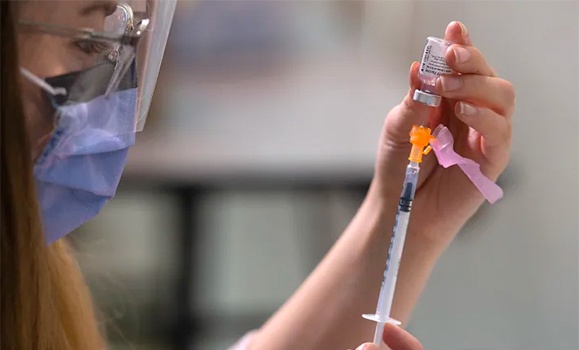The world is witnessing a concerning rise in the cases of COVID-19 and the emergence of multiple subvariants linked to the Omicron strain of SARS-CoV-2, which are quickly overtaking their viral cousins.
The most dominant strain is now EG.5, which was by the last month due to its rapid spread around the globe over the summer. It accounts for almost one-quarter of the new COVID-19 cases in the United States, is spreading quickly in many other countries and is overtaking other Omicron descendants.
While scientists are still learning about its severity and transmissibility, it appears there is little difference between the various strains when it comes to symptoms, which include congestion, headaches, fatigue, a sore throat, coughing and changes in smell. For certain people, COVID-19 can still cause serious illness.
Another subvariant — the highly mutated BA.2.86 — has also been reported in several countries, but does not appear to be outcompeting other variants or causing severe illness.
 , a professor in Dal's departments of and and head of Infectious Diseases at the IWK Health Centre, conducts studies on the prevention of infectious diseases using vaccines and is a member of the federal COVID-19 Science Expert Panel. We spoke to Dr. Langley about where things stand with COVID-19 in Canada.
, a professor in Dal's departments of and and head of Infectious Diseases at the IWK Health Centre, conducts studies on the prevention of infectious diseases using vaccines and is a member of the federal COVID-19 Science Expert Panel. We spoke to Dr. Langley about where things stand with COVID-19 in Canada.
What are the dominant SARS-CoV-2 variants that we are seeing now and how much do we know about them?
The most common circulating variants globally and in Canada are the XBB subvariants. EG.5 is related is to the XBB sub-lineages. They are related to the Omicron variant which appeared in November of 2021. They are generally more transmissible than earlier viruses.
How do they differ from their predecessors?
The currently circulating SARS-CoV-2 viruses are subvariants of the Omicron variant, which appeared in November 2021. Viruses related to the Omicron variant are called subvariants. The SARS-CoV-2 virus continuously evolves, with changes in its genetic code appearing as it multiplies.
Are we seeing or expecting to see another wave of infection?
There is surveillance in place in Canada to detect hospital admissions and ambulatory or outpatient visits for COVID-19 illness. The long-term pattern of SARS-CoV-2 circulation is not known with certainty, but it is possible that cases will increase in the fall and winter months in 2023-2024. The public health in Canada has detected an uptick in illness in recent weeks. Vaccine programs will soon be announced and will offer people the XBB formulation of vaccine and the influenza vaccine. These vaccines would be taken in separated injections, but could be administered at the same visit.
What is the status of boosters and how well do they protect against the strains circulating now?
 has authorized the use of the Moderna COVID-19 vaccine targeting the Omicron XBB.1.5 subvariant and the National Advisory Committee on Immunization has recommended its use in all persons six months of age and older. It is recommended in those who have been previously vaccinated and in those who have not been previously vaccinated. People are expected to obtain protection from currently circulating strains with this vaccine. Each provincial and territorial government will announce plans for vaccination programs. 
What is the guidance on when people should get their next shot?
What vaccine you get and when you should get it vary according to the vaccines you have already had. The Nova Scotia Health Authority has just announced its and eligibility for the new vaccine, which is available later this month. Right now, you are eligible for a COVID-19 vaccine if you are over six months of age and have not had your primary series, or are five years of age and older and have not had a single booster. 

